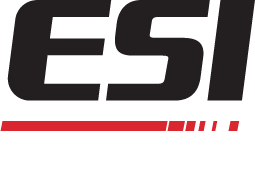Shrink Sleeve And Stretch Sleeve Labels Market Expects Large Growth
Shrink Sleeve and Stretch Sleeve Labels Market Expects Large Growth
If you are looking to expand your packaging offerings, now would be a good time to make an investment in shrink and stretch sleeve labeling. According to a Markets and Market report, the “shrink sleeve & stretch sleeve labels market is projected to reach USD $13.20 Billion by 2020, at a CAGR of 5.5% from 2015 to 2020.” Consumers expect their product packaging to be visually appealing, eco-friendly, and contain information about the product they are consuming. To meet this demand, companies are opting for shrink packaging, which molds to their product’s shape while still being attractive. This type of labeling continues to grow in popularity due to its advantages, but will have to overcome a few challenges to be a mainstay.
Drivers of Growth
Businesses are choosing shrink and stretch sleeve labels over traditional labeling because of the flexibility and added capabilities it offers. One of the most advantageous features that sets it apart is the tamper-evident packaging. In the United States, the Food and Drug Administration has measures that are in place to prevent tampering with digestible products, so increased protection is a competitive edge. Shrink sleeve packaging is an effective tampering prevention method that fits in with a product's design.
For an example, think of a bottle of single serve chocolate milk. If the shrink sleeve covers the whole bottle, including the cap, a tamper-evident label is already built in. If anyone, maliciously or not, tries to open the bottle or inject something into its contents, the consumer will be able to notice and not consume the product.
Additionally, this type of labeling also opens up the door to print on space that would otherwise be unutilized. Depending on the shape, bottles and jars have crevices and curvatures that are unreachable with traditional labeling. Shrinking a label around these curvatures allows the label to sit on these curves. Whether it’s a continuation of the logo, extra nutritional information or a sleek product design, shrink sleeve allows one to make use of the whole package, not just the flat parts.
Market Challenges
One of the biggest challenges with shrink and stretch sleeve packaging right now is its recycling and the recycling of the bottles that use it. Labels that are snug around a product hamper recycling efforts of the plastic or glass bottle it sits on. In order to recycle bottles with shrink wrap labeling, it must be removed from the bottle. This is costly for recyclers and can confuse optical machines that sort the different types of bottles by color. According to Plastics News, solutions for this are already on the way. Experts suggest that leaving 20% of a bottle uncovered will aid in the auto-sorting in recycling facilities. Additionally, manufacturers are researching a polyolefin label that separates from the bottle in a separation tank. With shrink labels growing in popularity and environmental effects a concern for consumers, we can expect not too distant solutions for this issue.
Due to a growing industry and continued demand for this type of labeling, competition in the industry is growing. Firms both large and small are using shrink sleeve packaging options as a way to entice consumers. Competition depends on the type of polymer film, application of the sleeve, printing/ink used, and region that is serviced. As the industry develops, expect highly competitive markets to be maintained in Asia, Europe, and North America.
Walk through the aisles at your corner convenience store and you will undoubtedly spot many beverage bottles that use shrink sleeve and stretch sleeve labels. With the market expected to grow to exceed $13 billion, we can expect many more products to follow suit. If you do decide to use shrink labeling, electron beam printing is an eco-friendly and efficient way to print high-quality designs on the packaging.

